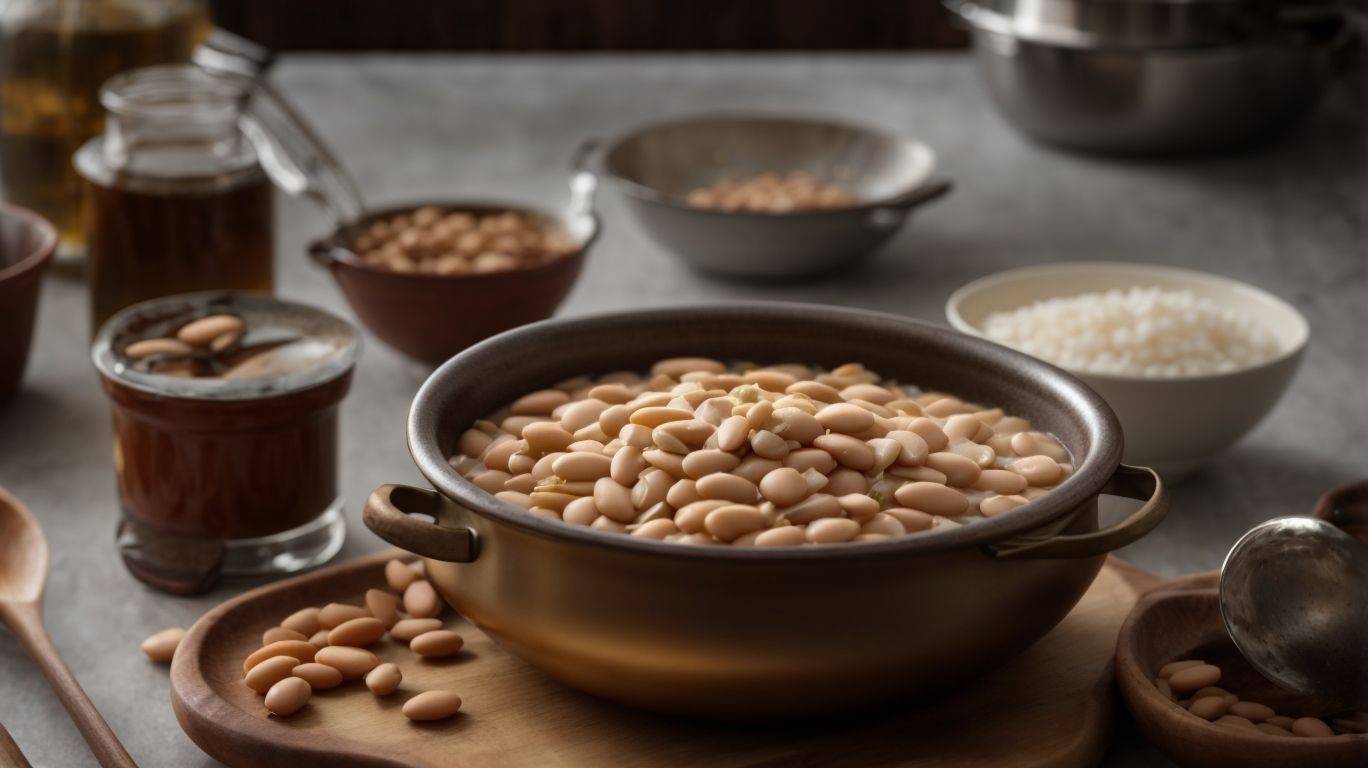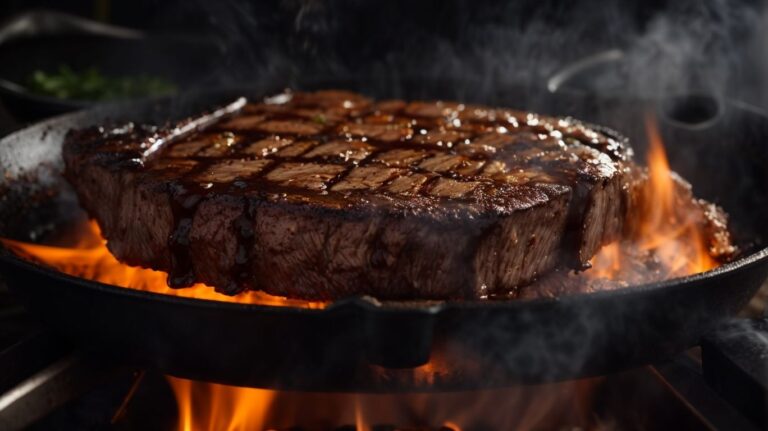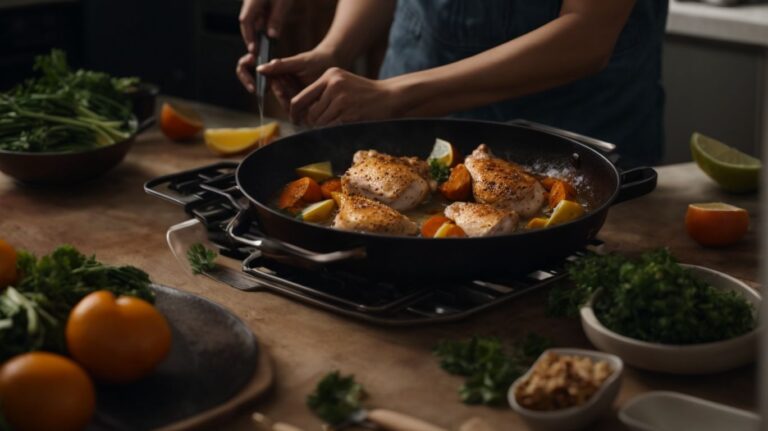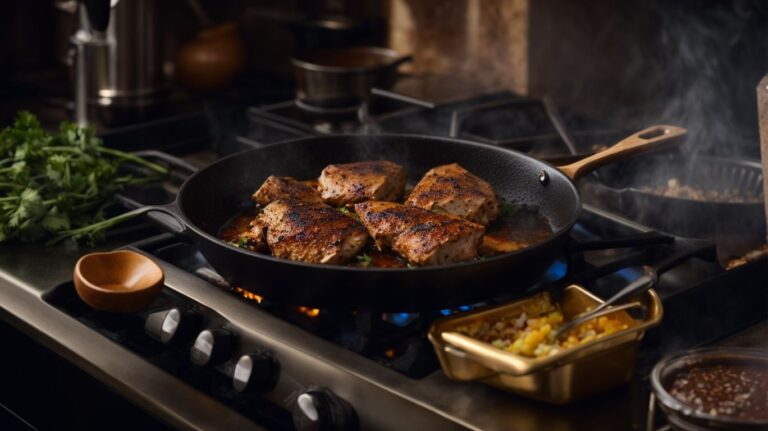How to Cook Cannellini Beans After Soaking?
Have you ever wondered about the best way to prepare and cook cannellini beans?
We will explore everything you need to know about these versatile legumes. From the benefits of soaking them before cooking to the different methods of soaking and cooking, we’ve got you covered.
Whether you’re a seasoned chef or a novice in the kitchen, this guide will help you master the art of cooking delicious cannellini beans.
Stay tuned for some mouth-watering recipes using these nutritious beans!
Key Takeaways:
What Are Cannellini Beans?
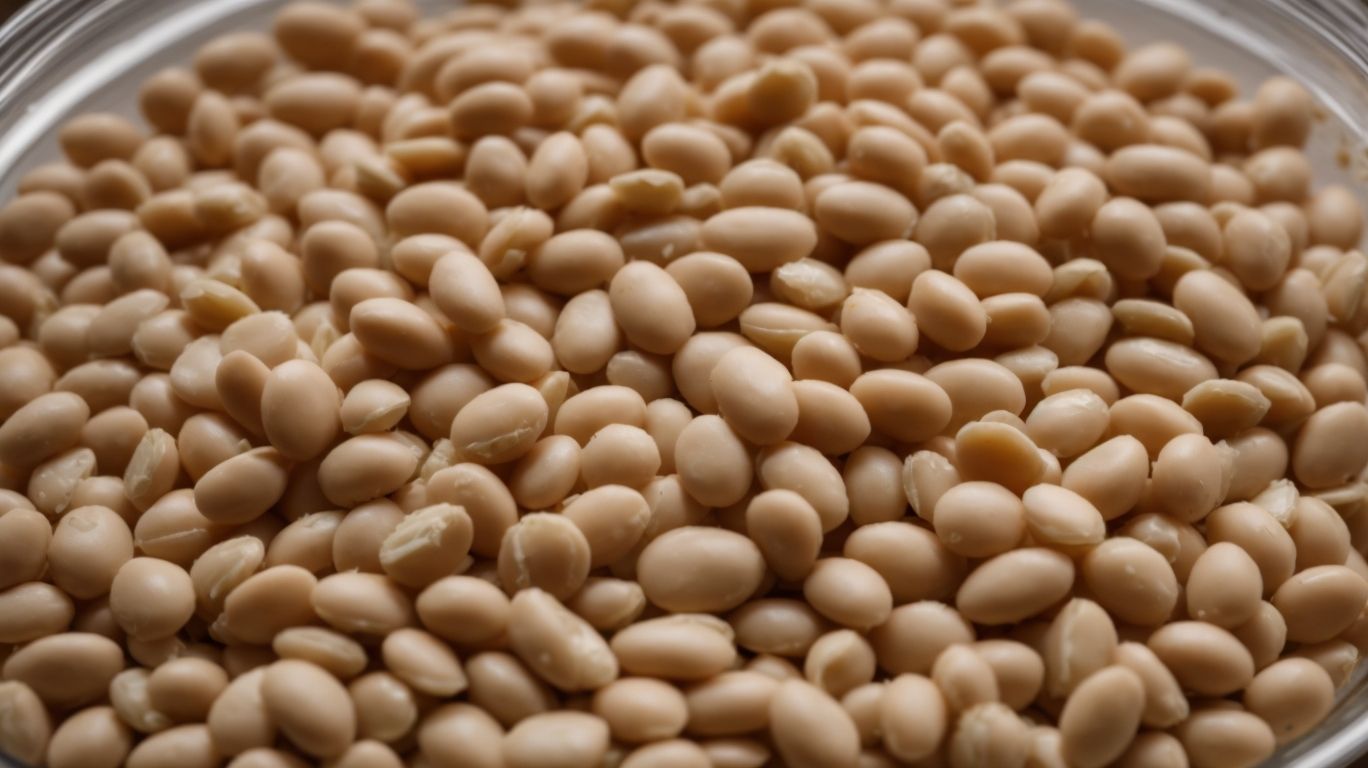
Credits: Poormet.Com – Henry White
Cannellini beans, also known as white kidney beans, are a popular legume used in various culinary dishes and recipes. These beans are prized for their creamy texture and mild flavor.
When cooked, cannellini beans have a smooth and velvety consistency, making them perfect for soups, stews, salads, and dips. Their subtle earthy taste pairs well with a variety of ingredients, allowing them to take on different flavors in dishes.
Rich in protein and fiber, cannellini beans are not only delicious but also highly nutritious. Using dried beans in cooking enhances their flavor profile and ensures a satisfying texture in your meals.
Why Should You Soak Cannellini Beans Before Cooking?
Soaking cannellini beans before cooking is essential to ensure proper texture, enhance flavor absorption, and reduce cooking time. This process helps to soften the beans and improve their overall quality when prepared.
Soaking allows the beans to rehydrate, leading to a more uniform texture throughout the beans instead of having a mix of hard and soft spots. By breaking down complex sugars and making the beans easier to digest, soaking also aids in nutrient absorption, making the beans more nutritious. Soaking helps to reduce the cooking time significantly, as the beans start off partially cooked. This process not only saves time but also preserves the natural flavors of the beans, allowing them to absorb other flavors more effectively during the cooking process.
How Long Should You Soak Cannellini Beans?
The optimal soaking time for cannellini beans typically ranges from 8 to 12 hours, allowing the beans to fully rehydrate and soften. This soaking period ensures that the beans cook evenly and result in a desirable consistency.
The soaking duration can vary based on personal preferences or specific recipes. Some chefs prefer a longer soak time of up to 24 hours for incredibly creamy beans. On the other hand, if you’re pressed for time, a quick soak method can be employed by bringing the beans to a boil, removing them from heat, and letting them sit for an hour.
- Experimenting with different soak times can help you achieve the texture and flavor you desire in your dishes.
What Are The Benefits Of Soaking Cannellini Beans?
Soaking cannellini beans offers several advantages, including reduced cooking time, improved digestibility, and enhanced nutrient absorption. This preparatory step contributes to the overall nutritional value and culinary experience.
By soaking the beans for a prolonged period before cooking, you not only cut down the cooking time significantly but also make them easier to digest. The soaking process breaks down the indigestible sugars, which can cause bloating and gas, and makes the beans more palatable.
Moreover, soaking helps release phytic acid, an anti-nutrient that can hinder the absorption of essential minerals like iron and zinc. By reducing phytic acid levels, soaking enhances the bioavailability of these nutrients, making the beans even more nutritious.
Reduces Cooking Time
Soaking cannellini beans before cooking significantly reduces the required cooking time, allowing for quicker preparation of delicious dishes. This process helps to soften the beans, leading to faster cooking when simmered or boiled.
By soaking the beans, you can cut down the simmering or boiling time by almost half, making it much more convenient for your cooking schedule. To soak cannellini beans, simply place them in a bowl, cover with water and let them sit overnight. This softens the beans and breaks down complex sugars, making them easier to digest. Soaking can help get rid of some of the indigestible sugars that can cause discomfort for some individuals.
Improves Digestibility
Soaking cannellini beans improves their digestibility by breaking down complex sugars and reducing gas-producing compounds. The process, often enhanced by ingredients like garlic and onions, promotes easier digestion and absorption of nutrients.
Garlic and onions contain prebiotic properties that help nourish the gut’s beneficial bacteria, aiding in the overall digestive process. These ingredients are known for their ability to reduce bloating and discomfort often associated with bean consumption. When combined with the soaking process, they work synergistically to improve the beans’ texture and make them easier on the digestive system.
Soaking cannellini beans helps neutralize enzyme inhibitors and phytic acid, which can interfere with the absorption of essential nutrients such as iron, zinc, and calcium. By soaking the beans, you can enhance the bioavailability of these nutrients, making them more accessible to the body during digestion.
Enhances Nutrient Absorption
Soaking cannellini beans enhances nutrient absorption by reducing anti-nutrients and promoting better assimilation of essential vitamins and minerals. Combining soaking with herbs further enriches the nutritional profile of cooked beans.
Herbs not only add flavor but also contribute valuable nutrients and phytochemicals to the dish, enhancing its overall nutritional content. For instance, rosemary is rich in antioxidants that help combat oxidative stress in the body. Pairing garlic with soaked cannellini beans not only boosts flavor but also provides sulfur compounds that support detoxification processes.
What Are The Different Methods Of Soaking Cannellini Beans?
There are various methods to soak cannellini beans, including overnight soaking, quick soaking, and boiling soaking. Each technique offers unique benefits for preparing the beans and can be tailored to individual preferences.
One common approach is overnight soaking, which involves placing the beans in a large bowl, covering them with water, and letting them sit for at least 8 hours or overnight. This method helps soften the beans, reducing cooking time and improving digestibility.
On the other hand, quick soaking requires boiling the beans for a few minutes, then letting them sit off heat for an hour before cooking. This expedited process can save time and still yield tender beans.
Alternatively, boiling soaking involves cooking the beans in hot water for a specified time to accelerate softening. Choose the soaking method based on your time constraints and recipe requirements.
Overnight Soaking
Overnight soaking is a traditional method for preparing cannellini beans, involving immersing the beans in water with salt for an extended period. This gradual rehydration process yields tender beans ideal for cooking.
During the soaking process, the beans absorb water and salt, which helps break down complex sugars and starches, making the beans easier to digest. This method also reduces the cooking time significantly, ensuring a more efficient and flavorful preparation.
Soaking can help reduce the oligosaccharides present in beans, which can cause digestive discomfort. By allowing the beans to rehydrate slowly overnight, you are setting the foundation for a delicious and nutritious bean dish the next day.
Quick Soaking
Quick soaking is a rapid method to prepare cannellini beans by boiling them briefly and allowing them to rest.
This method involves bringing a pot of water to a boil, adding the cannellini beans, and letting them simmer for about two minutes. After boiling, the beans are left to soak in the hot water for an hour, absorbing moisture and softening. This accelerated process significantly cuts down the traditional overnight soaking time, delivering well-hydrated beans without sacrificing texture or taste.
Boiling Soaking
Boiling soaking involves immersing cannellini beans in hot water or broth and allowing them to cool gradually. This method accelerates the soaking process and infuses the beans with additional flavor from the liquid.
When cannellini beans are subjected to this technique, the heat from the hot liquid helps to soften the beans quicker than traditional soaking methods. The gradual cooling process post-boiling allows the beans to absorb the flavorful broth or water, enhancing their taste and texture.
This method works wonders in expediting the preparation time for cannellini beans, making them ready for cooking or incorporating into dishes much faster than simply soaking in cold water. The combination of heat, gradual cooling, and flavor infusion sets the stage for a delicious bean-based meal.
How To Cook Soaked Cannellini Beans?
Cooking soaked cannellini beans can be done using different methods, such as the stovetop method, pressure cooker method, or slow cooker method. Each approach offers unique advantages in terms of cooking time and flavor development.
Regarding the stovetop method, it is a traditional and reliable way to cook soaked cannellini beans. By simmering the beans in a pot on the stove, you have control over the cooking process, allowing you to adjust the heat as needed for optimal tenderness.
The pressure cooker method, on the other hand, is known for its time efficiency. The high pressure helps to break down the beans quickly, reducing the overall cooking time significantly.
For a hands-off approach, the slow cooker method is ideal. Slow cooking allows the beans to absorb flavors deeply, resulting in a rich and creamy texture.
Stovetop Method
The stovetop method for cooking soaked cannellini beans involves simmering them in a flavorful broth with ingredients like garlic and olive oil. This slow cooking process allows the beans to absorb aromas and develop rich flavors.
As the beans simmer gently, the garlic infuses its pungent aroma into the dish, complemented by the fruity notes of olive oil. The gradual cooking process helps soften the beans while retaining their nutrients and natural taste, resulting in a creamy texture and robust flavor profile. The broth not only adds moisture but also serves as a conduit for the beans to soak in all the aromatic elements.
Pressure Cooker Method
Using a pressure cooker to cook soaked cannellini beans offers a quicker alternative with the addition of onions and herbs for enhanced flavor. The high pressure and steam infusion help in tenderizing the beans efficiently.
Pressure cooking not only significantly reduces the cooking time but also helps in retaining the nutrients present in the beans. The closed environment inside the pressure cooker traps the steam, allowing the beans to cook faster than conventional methods. When combined with onions and herbs, the beans absorb the flavors, creating a delicious and aromatic dish. This method also ensures that the beans remain moist and soft, without losing their nutritional value.
Slow Cooker Method
The slow cooker method for cooking soaked cannellini beans involves gentle simmering with herbs to achieve a tender texture and infused flavors. This gradual cooking process results in perfectly cooked beans ideal for various recipes.
One of the key benefits of using the slow cooker method for cannellini beans is the ability to allow the flavors to meld effectively due to the extended cooking time. Through slow cooking, the beans have ample time to absorb the aromatic herbs and spices, resulting in a rich and well-rounded taste profile.
Slow cooking helps in breaking down the beans slowly, ensuring a creamy texture without losing their shape or turning mushy. This method also helps in enhancing the nutritional value of the beans by retaining important nutrients that might be lost in faster cooking methods.
What Are Some Delicious Recipes Using Cooked Cannellini Beans?
There are numerous delectable recipes that feature cooked cannellini beans, such as Tuscan White Bean Soup, White Bean and Kale Salad, and White Bean and Garlic Dip. These plant-based dishes offer a delightful combination of flavors and textures.
For a comforting and warming meal, Tuscan White Bean Soup combines the creamy beans with savory herbs and a hint of garlic, perfect for chilly evenings. On the other hand, White Bean and Kale Salad presents a refreshing and nutritious option, blending the earthy beans with vibrant greens, tangy dressing, and a sprinkle of Parmesan for added richness.
Pairing these dishes with crusty bread adds a delightful crunchy element that complements the softness of the beans, creating a wholesome dining experience. Whether for a light lunch or a satisfying dinner, these recipes showcase the versatility and deliciousness of cannellini beans.
Tuscan White Bean Soup
Tuscan White Bean Soup is a hearty and comforting dish made with cooked cannellini beans simmered in a flavorful broth with aromatic herbs. This classic recipe showcases the rich flavors and creamy texture of the beans.
The process of making this delectable soup typically involves sautéing onions, garlic, and celery in olive oil, then adding the cooked cannellini beans along with broth and fresh herbs like rosemary and thyme. These herbs infuse the soup with a fragrant aroma while enhancing the earthy taste of the beans.
Traditionally, Tuscan White Bean Soup is simmered slowly to allow all the flavors to meld together, creating a harmonious blend of savory notes with a hint of herbaceous undertones. The beans, when cooked to perfection, retain a slight firmness that adds a delightful texture to each spoonful.
White Bean and Kale Salad
White Bean and Kale Salad is a nutritious and flavorful dish featuring cooked cannellini beans, fresh kale, and a zesty dressing with olive oil and onions. This vibrant salad offers a harmonious blend of textures and tastes.
Starting with the luscious creaminess of the cannellini beans, which provide a rich source of protein, fiber, and essential vitamins, this salad is not only delicious but also incredibly nourishing. The earthy bitterness of the kale beautifully complements the creaminess of the beans, adding a refreshing crunch to every bite.
The tangy dressing, with its hints of olive oil and the subtle sweetness of onions, ties all the elements together, creating a dish that is both satisfying and healthful. With its mix of flavors and textures, this White Bean and Kale Salad is a perfect choice for those looking for a nutrient-packed and tasty meal that is sure to leave you feeling satisfied and energized.
White Bean and Garlic Dip
White Bean and Garlic Dip is a savory and creamy dip made with cooked cannellini beans, roasted garlic, and aromatic herbs. This flavorful dip offers a versatile accompaniment for various snacks and appetizers.
Mixing the tender cannellini beans with the earthy notes of the roasted garlic creates a dip that is both satisfyingly rich and comforting. The addition of fresh herbs like parsley, thyme, or rosemary elevates the flavors, giving the dip a bright and herbaceous profile. This versatile dip can be served with a variety of dippers, such as toasted pita chips, vegetable crudites, or warm bread slices. It also pairs wonderfully with grilled meats or seafood dishes, adding a burst of flavor to your meal.
Frequently Asked Questions
What is the best way to cook cannellini beans after soaking?
The best way to cook cannellini beans after soaking is to simmer them in a pot of boiling water for about 1-2 hours until they are tender.
How long should I soak cannellini beans before cooking?
It is recommended to soak cannellini beans for at least 8 hours or overnight in cool water before cooking. This will help to soften them and reduce cooking time.
Can I use a pressure cooker to cook cannellini beans after soaking?
Yes, you can use a pressure cooker to cook cannellini beans after soaking. It will significantly reduce the cooking time to about 30-40 minutes.
Can I season the water when cooking cannellini beans after soaking?
Yes, you can season the water with herbs, spices, and salt when cooking cannellini beans after soaking. This will enhance the flavor of the beans.
How do I know when cannellini beans are fully cooked?
The best way to know when cannellini beans are fully cooked is to taste them. The beans should be tender and easy to chew, with no hard or crunchy parts.
Can I freeze cooked cannellini beans after soaking?
Yes, you can freeze cooked cannellini beans after soaking. Simply let them cool completely, then store them in an airtight container or freezer bag. They will last for up to 6 months in the freezer.

